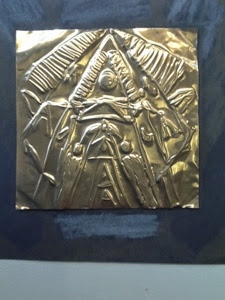Illuminated Letters from The Book of Kells
The Book of Kells is a stunningly beautiful manuscript containing the Four Gospels. It is Ireland's most precious medieval artifact, and is generally considered the finest surviving illuminated manuscript to have been produced in medieval Europe.
Origins and History:
The Book of Kells was probably produced in a monastery on the Isle of Iona, Scotland, to honor Saint Columba in the early 8th century. After a Viking raid the book was moved to Kells, Ireland, sometime in the 9th century. It was stolen in the 11th century, at which time its cover was torn off and it was thrown into a ditch. The cover, which most likely included gold and gems, has never been found, and the book suffered some water damage; but otherwise it is extraordinarily well-preserved.
In 1541, at the height of the English Reformation, the book was taken by the Roman Catholic Church for safekeeping. It was returned to Ireland in the 17th century, and Archbishop James Ussher gave it to Trinity College, Dublin, where it resides today.
Construction:
The Book of Kells was written on vellum (calfskin), which was time-consuming to prepare properly but made for an excellent, smooth writing surface. 680 individual pages (340 folios) have survived, and of them only two lack any form of artistic ornamentation. In addition to incidental character illuminations, there are entire pages that are primarily decoration, including portrait pages, "carpet" pages and partially decorated pages with only a line or so of text.
As many as ten different colors were used in the illuminations, some of them rare and expensive dyes that had to be imported from the continent. The workmanship is so fine that some of the details can only be clearly seen with a magnifying glass.
Click here to read more about the Book of Kells
Third and fourth grade artists looked at examples of illuminated letters from the Book of Kells and practiced drawing Celtic knots. Each student chose a letter to illuminate, then transferred the image onto gold metal foil.























No comments:
Post a Comment